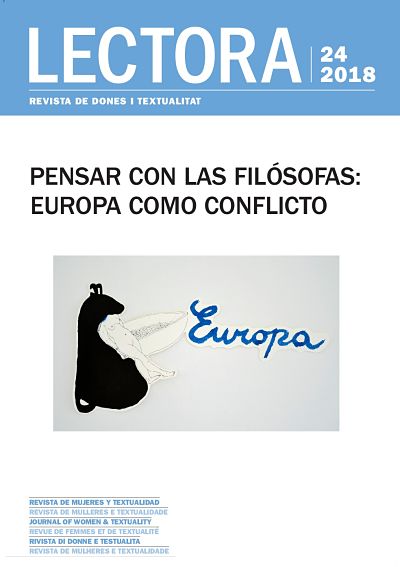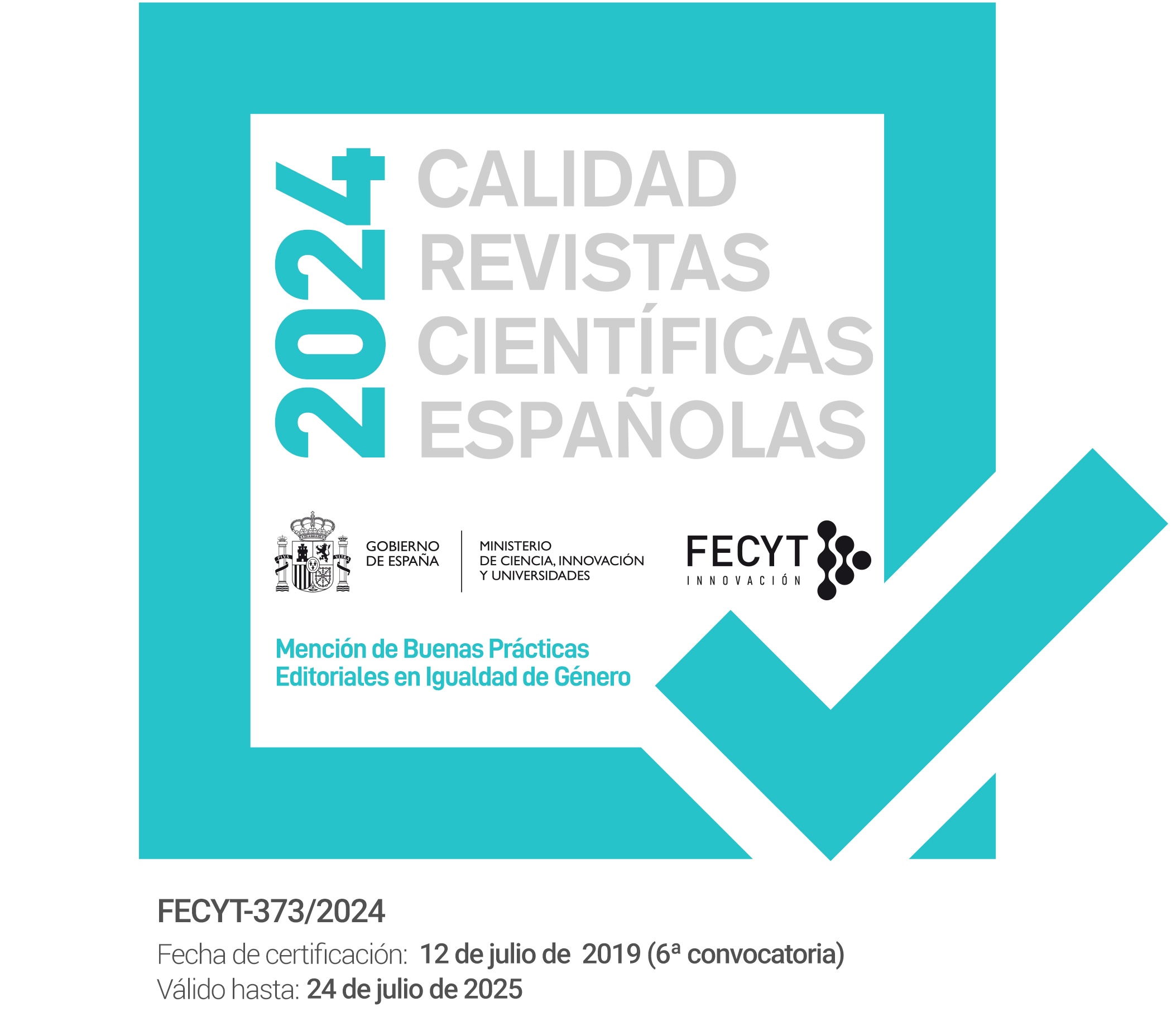Michael Field's Sapphism: An Ontology of the Feminine in "Long Ago" (1889)
DOI:
https://doi.org/10.1344/Lectora2018.24.12Paraules clau:
Michael Field, Long Ago, Sappho, lesbiansm, vitalismResum
This article examines the valuable contribution that Katherine Bradley and her niece Edith Cooper made to the vast tradition of queer Sapphism in Long Ago (1889), their first volume of poetry published under the collaborative pseudonym of Michael Field. Taking as my starting point the well-established assumption among contemporary critics that this volume represents an original instance of lesbian writing, I seek to argue that Long Ago not only appropriates and celebrates the figure of Sappho as a lesbian archetype, it also proposes a subversive gender theory that conceptualises the feminine as the essential principle of vitalism, the masculine as the very representation of death, and homoeroticism as the most genuine form of love.
Referències
Beauvoir, Simone de (2011), The Second Sex, Constance Borde and Sheila Malovany-Chevallier (trans.), New York, Vintage Ebooks. [1949]
Case, Sue-Ellen (1991), "Tracking the Vampire", Differences: A Journal of Feminist Cultural Studies, 3 (2): 1-20.
DuBois, Page (2015), Sappho, London and New York, I.B. Tauris.
Evangelista, Stefano (2009), British Aestheticism and the Ancient Greece: Hellenism, Reception, Gods in Exile, Basingstoke, Palgrave Macmillan.
Field, Michael (1889), Long Ago, London, George Bell and Sons.
Greene, Ellen (ed.) (1996), Re-reading Sappho: Reception and Transmission,
Berkeley, University of California Press.
Heidegger, Martin (1996), Being and Time, Joan Stambough (trans.), New York,
State University of New York. [1926]
Heilmann, Ann (2000), New Woman Fiction: Women Writing First-Wave
Feminism, Basingstoke, Palgrave Macmillan.
Hutchings, Kevin (2007), "Ecocriticism in British Romantic Studies", Literature
Compass, 4 (1): 172-202.
Irigaray, Luce (1985), This Sex Which Is Not One, Catherine Porter and Carolyn
Burk (trans.), New York, Cornell UP. [1977]
Leighton, Angela (1992), Victorian Women Poets: Writing Against the Heart, New York, Harvester Wheatsheaf.
Madden, Ed (2008), Tiresian Poetics: Modernism, Sexuality, Voice, 1888-2001,
Madison, Fairleigh Dickinson UP.
Olverson, Tracy D. (2009), "Libidinous Laureates and Lyrical Maenads: Michael
Field, Swinburne and Erotic Hellenism", Victorian Poetry, 47 (4): 759-802.
Primamore, Elizabeth A. (2009), "Michael Field’s Sapphic Communities:
Constructing the Transgressive Feminine Sensibility in Long Ago (1889)", The
Michaelian 1 (The Latchkey: Journal of New Woman Studies), 29/11/2017.
<thelatchkey.org/Field/MF1/primamorearticle.htm>
Prins, Yopie (1999), Victorian Sappho, Princeton, Princeton UP.
Reynolds, Margaret (2003), The Sappho History, Basingstoke, Palgrave Macmillan.
Škof, Lenart (2015), Breath of Proximity: Intersubjectivity, Ethics and Peace,
Heidelberg, Springer.
Symonds, John Addington (1873), Studies of the Greek Poets: Second Series,
London, Smith, Elder, & Co.
Thain, Marion (2007), "Michael Field". Poetry, Aestheticism, and the Fin de Siècle, Cambridge, Cambridge UP.
Wharton, Henry T. (1907), Sappho: Memoir, Text, Selected Renderings and a Literal Translation, London and New York, John Lane Company. [1885]
White, Christine (1990), "'Poets and Lovers Evermore': Interpreting Female Love
in the Poetry and Journals of Michael Field", Textual Practice, 4 (2): 197-212.
—(1996), "The Tiresian Poet: Michael Field", Victorian Women Poets: A Critical
Reader, Angela Leighton (ed.), Oxford, Blackwell: 148-61.
Descàrregues
Publicades
Com citar
Número
Secció
Llicència
Els autors i les autores conserven els drets d’autoria i atorguen a Lectora: revista de dones i textualitat el dret de difusió. L'’obra serà disponible simultàniament sota una Llicència de Reconeixement-NoComercial- SenseObraDerivada de Creative Commons que, si no si indica el contari, permet compartir l’obra amb tercers, sempre que aquests en reconeguin l’autoria i la publicació inicial en aquesta revista.
Els autors i autores són lliures de fer acords contractuals addicionals independents per a la distribució no exclusiva de la versió de l’obra publicada a la revista (com ara la publicació en un repositori institucional o en un llibre), sempre que se’n reconegui la publicació inicial en aquesta revista.
S’encoratja els autors i autores a reproduir la seva obra en línia (en repositoris institucionals, temàtics o a la seva pàgina web, per exemple), amb l’objectiu d’aconseguir intercanvis productius i fer que l’obra obtingui més citacions (vegeu The Effect of Open Access, en anglès).




